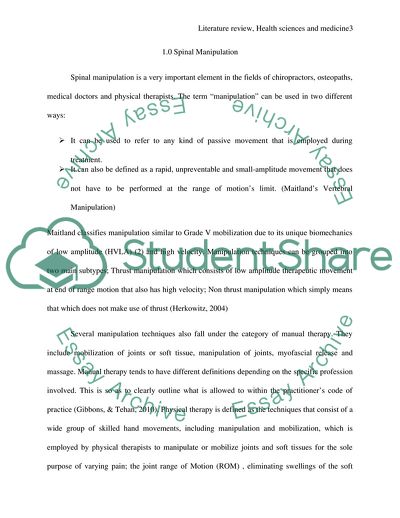Cite this document
(Spinal Manipulation Coursework Example | Topics and Well Written Essays - 2000 words, n.d.)
Spinal Manipulation Coursework Example | Topics and Well Written Essays - 2000 words. https://studentshare.org/health-sciences-medicine/1815715-does-spinal-manipulation-hvla-to-l1-2-vertebrae-improve-the-abdominal-drawing-in-manoeuvre-of-the-transverse-abdominis-measured-using-a-pressure-biofeedback-unit-in-patients-with-non-specific-low-back-pain-lasting-more-than-six-months-but-less-than-t
Spinal Manipulation Coursework Example | Topics and Well Written Essays - 2000 words. https://studentshare.org/health-sciences-medicine/1815715-does-spinal-manipulation-hvla-to-l1-2-vertebrae-improve-the-abdominal-drawing-in-manoeuvre-of-the-transverse-abdominis-measured-using-a-pressure-biofeedback-unit-in-patients-with-non-specific-low-back-pain-lasting-more-than-six-months-but-less-than-t
(Spinal Manipulation Coursework Example | Topics and Well Written Essays - 2000 Words)
Spinal Manipulation Coursework Example | Topics and Well Written Essays - 2000 Words. https://studentshare.org/health-sciences-medicine/1815715-does-spinal-manipulation-hvla-to-l1-2-vertebrae-improve-the-abdominal-drawing-in-manoeuvre-of-the-transverse-abdominis-measured-using-a-pressure-biofeedback-unit-in-patients-with-non-specific-low-back-pain-lasting-more-than-six-months-but-less-than-t.
Spinal Manipulation Coursework Example | Topics and Well Written Essays - 2000 Words. https://studentshare.org/health-sciences-medicine/1815715-does-spinal-manipulation-hvla-to-l1-2-vertebrae-improve-the-abdominal-drawing-in-manoeuvre-of-the-transverse-abdominis-measured-using-a-pressure-biofeedback-unit-in-patients-with-non-specific-low-back-pain-lasting-more-than-six-months-but-less-than-t.
“Spinal Manipulation Coursework Example | Topics and Well Written Essays - 2000 Words”. https://studentshare.org/health-sciences-medicine/1815715-does-spinal-manipulation-hvla-to-l1-2-vertebrae-improve-the-abdominal-drawing-in-manoeuvre-of-the-transverse-abdominis-measured-using-a-pressure-biofeedback-unit-in-patients-with-non-specific-low-back-pain-lasting-more-than-six-months-but-less-than-t.


